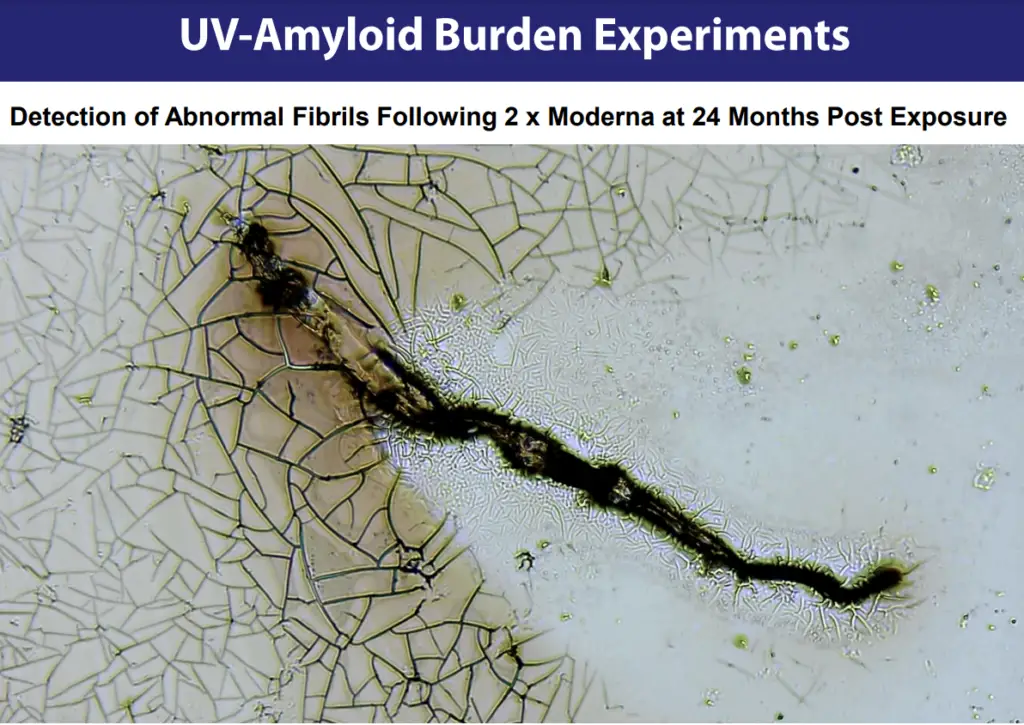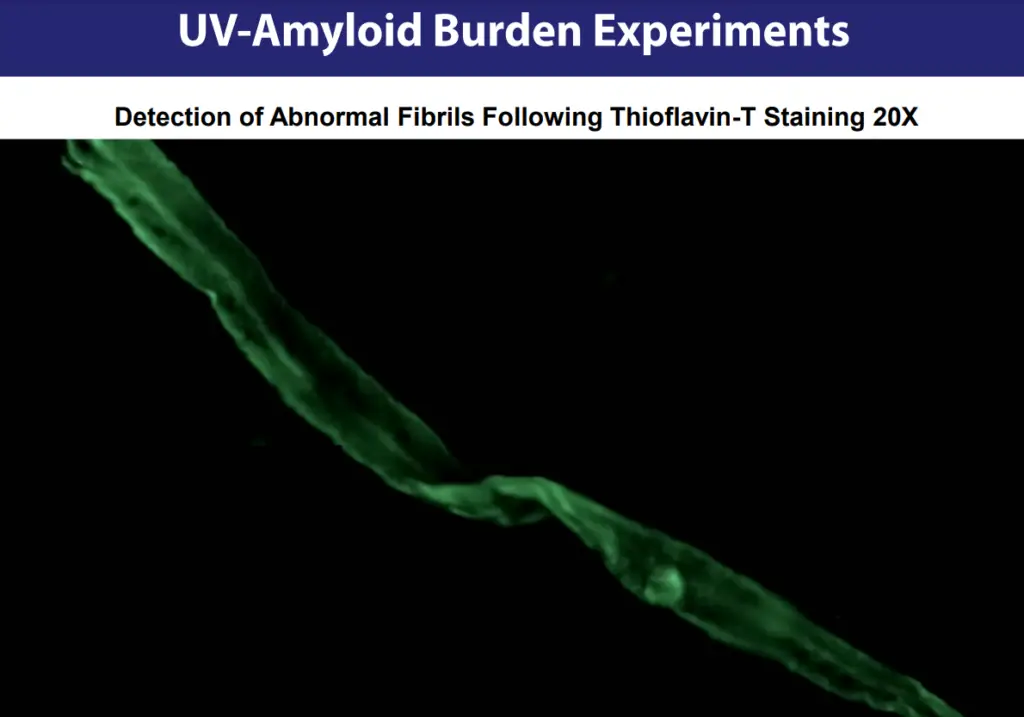Collection for UV-Microscopy
& Detection of Amyloid Burden
Please read the instructions and include a brief description of your general health, i.e. if you have any medical issues, Diabetes, Long-Covid, etc. etc.
We also would need your email address to send the results, if we find an anomaly.
All results will be kept with patient confidentiality in mind.
Cost of Analysis
If we find a positive hit for any unusual items, you will have the option to receive the results from Dr. McCairn in a video, as we are recording all the submissions.
The cost for the lab time incurred is $150 USD.
We will email you the payment link as well as the video with Dr. McCairn’s comments.
Materials Needed
Materials Required: for Sample Collection for UV-Microscopy & Detection of Amyloid Burden
1. – You will need glass microscope slides. (***DO NOT USE COVERSLIPS***)
https://www.amazon.com/AmScope-BS-50P-100S-22-Pre-Cleaned-Microscope-Coverslips
2. – Safety Lancet -for blood specimen
https://www.amazon.com/McKesson-Lancets-Diabetes-Testing-Activation
3. – Sterilizing Swab
https://www.amazon.com/Curad-Alcohol-Prep-Thick-Swab
4. – Microscope Slide Mailer
https://www.amazon.com/Microscope-OakRidge-Products-Protect-shipping
Sending Samples
The address to send the samples to is:
Dr Kevin McCairn
Synaptek
Kani, nishi katabira 238-1
509-0265 Japan
Addition Information:
Here are some tips for shipping blood smears:
Packaging – Place the dried blood smears in a slide box with grooves to separate the slides. Then, pack the slide box in a larger box with cushioning to protect the slides. The packaging should be strong enough to withstand shocks and temperature changes.
Labeling – Include the following information on the packaging: Name, address of the submitter
– You can ship/mail the blood smears via mail or package carrier Shipping using the Microscope Slide Mailer.
Temperature – Blood smears should be stored and shipped at room temperature. Blood samples should be kept cool during storage and shipping, but not frozen.
Also Available:
Nanopore Sequencing
Nanopore sequencing is a cutting-edge technique for reading the sequence of nucleotides in DNA or RNA by passing these molecules through tiny nanopores embedded in a membrane.
As each nucleotide translocates through the nanopore, it partially blocks the flow of ions, causing unique changes in electrical current that correspond to each base. This change in current is measured and analyzed to determine the sequence.
The method is notable for its ability to sequence long DNA or RNA fragments in real-time, offering advantages in speed, portability, and the potential for direct sequencing without amplification, making it suitable for applications ranging from clinical diagnostics to environmental monitoring.
Email Dr. McCairn for futher information at kevin@synaptek.jp
RT-QuIC Testing
RT-QuIC (Real-Time Quaking-Induced Conversion) is indeed a diagnostic method used to detect misfolded proteins, specifically prions.
It’s particularly employed for diagnosing prion diseases like Creutzfeldt-Jakob disease by amplifying and detecting these misfolded proteins through changes in fluorescence.
Email Dr. McCairn for futher information at kevin@synaptek.jp
Detection of Abnormal Fibrils

This image shows the detection of abnormal fibrils in a sample that was exposed to two doses of Moderna (presumably referring to the mRNA vaccine) 24 months prior.
The staining technique used here is not specified, but given the context, it could be inferred that a similar method like Thioflavin-T or another amyloid-specific stain might have been used.
The image reveals a more complex structure with what appears to be a network of fibrils surrounded by a cracked or fragmented background, possibly indicating cellular or tissue damage or breakdown.
The darker regions might represent areas of higher amyloid concentration or aggregation.
Thioflavin-T Staining Fluoresce
Detection of Abnormal Fibrils Following Thioflavin-T Staining at 20X magnification.
This image shows the detection of amyloid fibrils stained with Thioflavin-T, which is a fluorescent dye that binds specifically to amyloid fibrils.
When viewed under UV light, these fibrils fluoresce, allowing for their visualization.
The green fluorescence seen in the image indicates the presence of amyloid fibrils.
The image depicts a long, continuous structure of fibrils, suggesting a significant amyloid burden.

